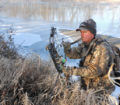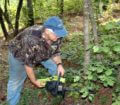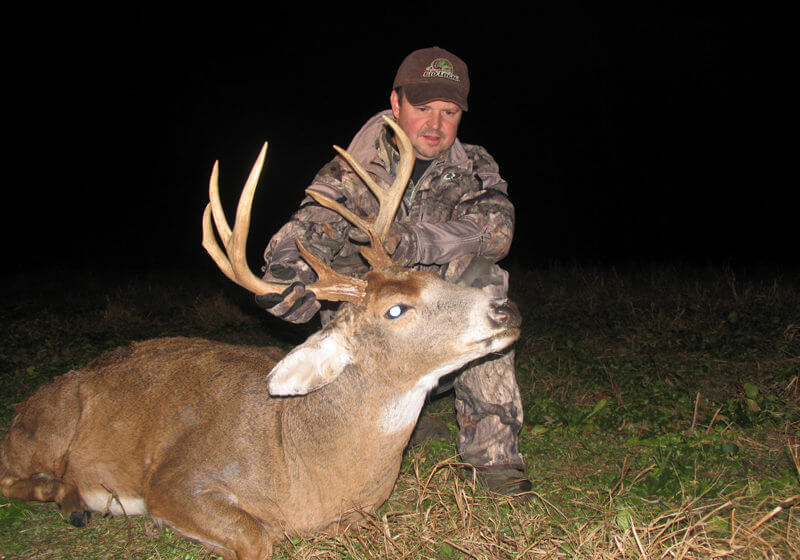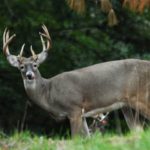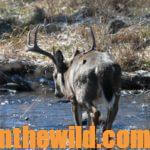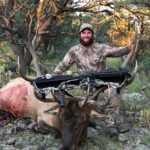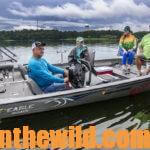John’s Note: Most sportsmen think they must manipulate habitat and provide more food for more deer to manage the wildlife on their lands. But you can have inexpensive deer herd management by applying the tactics of Dr. Grant Woods of Reedsville, Missouri, a well-known wildlife biologist, and other avid outdoorsmen who love developing their lands and deerherds.
 According to Dr. Woods, to develop a good deer herd with plenty of large bucks and a balanced population, the hunters must practice, “Trigger finger management. The three elements that landowners and hunters can affect to produce a better deer herd include the buck-to-doe ratio, the adult age structure and the habitat quality. The buck-to-doe ratio and the adult age structure are each totally controlled by the trigger finger of the hunter, especially at this time of the year, when much of the deer harvest occurs. Each time a hunter squeezes the trigger, he’s managing his deer herd where he hunts, either positively or negatively.”
According to Dr. Woods, to develop a good deer herd with plenty of large bucks and a balanced population, the hunters must practice, “Trigger finger management. The three elements that landowners and hunters can affect to produce a better deer herd include the buck-to-doe ratio, the adult age structure and the habitat quality. The buck-to-doe ratio and the adult age structure are each totally controlled by the trigger finger of the hunter, especially at this time of the year, when much of the deer harvest occurs. Each time a hunter squeezes the trigger, he’s managing his deer herd where he hunts, either positively or negatively.”
Most hunters refer to trigger-finger control as one of the most-difficult aspects of inexpensive deer management. If you’ve taken any buck with antlers above his hairline in years past, then you may have an extremely-difficult time letting 1-1/2- to 2-year-old bucks pass in front of your gun sights without squeezing the trigger. However, if you want to have older-age-class bucks with big antlers and heavy body weights to hunt, you’ve got to let those younger bucks walk. You must train that trigger finger to get excited about taking does instead of young bucks.
Statistics say that today’s hunters, primarily 35-years old and older, started their hunting careers at a time when states across the country restocked deer to rebuild the deer herds depleted during the market-hunting days of the early 1900s and the Great Depression of the 1930s. “The appropriate deer management at that time was to not harvest any does, which represented the reproductive arm of the  deer herd,” Woods explains. “During that time, not harvesting certain-sized bucks also would have been appropriate behavior. However, to allow hunter recreation and to be able to continue to grow large deer herds, many states let hunters indiscriminately harvest bucks, only controlling the harvest by a quota number and not the quality of the bucks being harvested.”
deer herd,” Woods explains. “During that time, not harvesting certain-sized bucks also would have been appropriate behavior. However, to allow hunter recreation and to be able to continue to grow large deer herds, many states let hunters indiscriminately harvest bucks, only controlling the harvest by a quota number and not the quality of the bucks being harvested.”
In other words, hunters could harvest small, young bucks as well as older, mature bucks. Since hunters generally found the 1-year-old buck the easiest buck to harvest, hunters took advantage of this age class of bucks, while allowing the reproductive arm of the herd – the does – to continue to grow. Many sections of the country, especially the Southeast, saw deer herds grow quickly. Often the herd reached and then surpassed the carrying capacity of the land, thereby creating range destruction.
“The deer overbrowsed the very-best plants that provided the most nutrition first,” Woods reports. “Generally the plants that are the tastiest to the deer contain the most nutrition. The remaining food that has the least amount of nutrition is usually what’s left for the majority of the herd to eat when overbrowsing occurs. For example, the strawberry bush, a favorite food of deer, was virtually wiped out in the South during this time in the 1960s–1980s.”
 In many areas of the country, wildlife managers failed in years past to properly educate hunters and landowners that to have good numbers of deer and high-quality bucks, they needed to change from a restoration system of deer management to a sustained-yield system of deer management.
In many areas of the country, wildlife managers failed in years past to properly educate hunters and landowners that to have good numbers of deer and high-quality bucks, they needed to change from a restoration system of deer management to a sustained-yield system of deer management.
You’ll learn more deer-hunting information and tips from hunters in John E. Phillips’ Kindle, CreateSpace and Audible books. Go to https://johninthewild.com/books/#deer to purchase and download to your Kindle, and/or download a Kindle app for your iPad, SmartPhone or computer. You also can go to Nook Books at www.barnesandnoble.com to buy.
Also you can download free books by going to https://johninthewild.com/free-books.
Next: What Sustained Yield Deer Management Is

